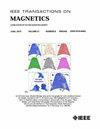一种优化的用于光盘存储的广义集成交错解码器
IF 1.9
3区 工程技术
Q3 ENGINEERING, ELECTRICAL & ELECTRONIC
引用次数: 0
摘要
光盘具有容量大、寿命长、功耗低等优点,是冷数据存储的理想选择。由于光盘存储密度的增加会增加误码率,因此为了保证数据的可靠性,需要使用强纠错码。基于Reed-Solomon码的广义集成交错码(GII)可以在高码率下提供足够的数据可靠性。但是,GII码由于嵌套解码,解码复杂度高,增加了硬件资源的消耗。此外,现有的GII解码器没有针对光盘存储中的突发错误特性进行优化,限制了它们的纠错能力。在本文中,我们提出了一种适合于光存储的面积高效的OGII解码器架构。OGII解码器采用了两项关键技术:1)流水线技术以减少整体硬件资源消耗;2)纠错算法以增强突发纠错能力。然而,密钥方程求解器(KES)块仍然是OGII解码器的核心组件,并且引入了纠错校正算法,增加了复杂性。因此,我们提出了一种交叉无逆Berlekamp-Massey架构(CIBMA),以减少硬件资源消耗并提高核心解码器模块的利用效率。硬件实现结果表明,在同等纠错能力下,与传统的光盘存储RS解码器相比,OGII的码率提高了7.2%,功耗降低了15%,硬件资源利用率仅为1.17美元。在相同码率下的仿真实验表明,在原始符号错误率为0.02的情况下,OGII解码器的分组错误率比传统的GII解码器降低了4-5个数量级,比传统的RS解码器降低了3-4个数量级。对于OGII的核心CIBMA模块,与其他基于纠错算法的架构相比,至少减少了20%的硬件资源,提高了50%的管道利用效率。本文章由计算机程序翻译,如有差异,请以英文原文为准。
OGII: An Optimized Generalized Integrated Interleaved Decoder for Optical Disk Storage
Optical disks are the ideal option for cold data storage because of their large capacity, extended lifespan, and low power consumption. To guarantee data dependability, strong error correction codes (ECCs) are needed since an increase in optical disk storage density raises the error rate. Generalized integrated interleaved (GII) codes based on Reed–Solomon (RS) codes can provide adequate data reliability at high code rates. However, the GII codes suffer from high decoding complexity due to nested decoding, which increases hardware resource consumption. Moreover, existing GII decoders are not optimized for the burst error characteristics in optical disk storage, limiting their error correction capability. In this paper, we propose an area-efficient OGII decoder architecture tailored for optical storage. The OGII decoder incorporates two key techniques: 1) a pipelining technique to reduce overall hardware resource consumption and 2) an error-erasure correction algorithm to enhance burst error correction capability. However, the key equation solver (KES) block remains the core component of the OGII decoder, and the introduction of the error-erasure correction algorithm increases complexity. Therefore, we propose a crisscross inverse-free Berlekamp–Massey architecture (CIBMA) to reduce hardware resource consumption and improve utilization efficiency in the core decoder module. Hardware implementation results demonstrate that under equivalent error correction capability, compared with traditional RS decoders in optical disk storage, the OGII achieves a 7.2% higher code rate and 15% lower power consumption with only $1.17\times $ hardware resource utilization. Simulation experiments under identical code rates show that with a raw symbol error rate of 0.02 and additional burst errors, the OGII decoder reduces block error rate by 4–5 orders of magnitude compared with conventional GII decoders, and 3–4 orders of magnitude compared with traditional RS decoders. For the core CIBMA module in OGII, it achieves at least 20% hardware resource reduction and 50% improvement in pipeline utilization efficiency compared with other architectures based on error-erasure correction algorithms.
求助全文
通过发布文献求助,成功后即可免费获取论文全文。
去求助
来源期刊

IEEE Transactions on Magnetics
工程技术-工程:电子与电气
CiteScore
4.00
自引率
14.30%
发文量
565
审稿时长
4.1 months
期刊介绍:
Science and technology related to the basic physics and engineering of magnetism, magnetic materials, applied magnetics, magnetic devices, and magnetic data storage. The IEEE Transactions on Magnetics publishes scholarly articles of archival value as well as tutorial expositions and critical reviews of classical subjects and topics of current interest.
 求助内容:
求助内容: 应助结果提醒方式:
应助结果提醒方式:


